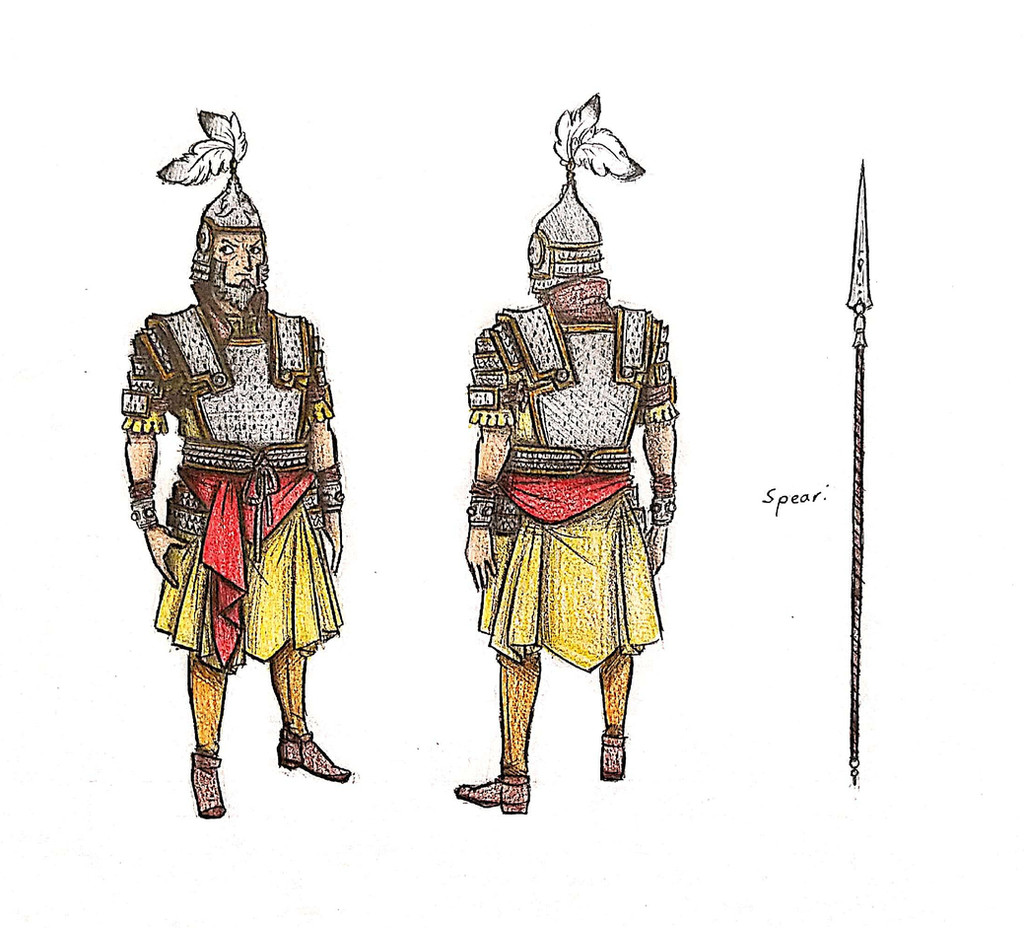HOME | DD
 Avapithecus — Oroetus
Avapithecus — Oroetus

#character #design #governor #history #iran #persian #referencesheet #satrap #achaemenid #oroetus
Published: 2023-05-18 11:17:22 +0000 UTC; Views: 2243; Favourites: 28; Downloads: 0
Redirect to original
Description
Oroetus was the satrap (the Persian equivalent of a governor) of the provinces of Lydia, Phrygia, and Ionia in the late 6th century BCE. Very few reports of his life come down to us from antiquity, so the exact dates are hard to pin down, but Herodotus tells us that he was appointed to the position by Cyrus the Great, so he had to have been in charge since at least 530 BCE. Nothing notable occurs until 522 BCE, though, around the time when Cyrus's son Cambyses wassuccumbing to his mental illness, and Darius the Great was usurping his brother's throne. Oroetus began to plot against Polycrates, the Greek tyrant of the island-city state of Samos, despite never even meeting the man. Herodotus claims the satrap's beef with Samos derived from a diss he received from the satrap of Dascylium, Mitrobates. During a spat, Mitrobates professed that Oroetus was a total lame-oid with weak game because Samos was right there across the pond from his territory and yet Oroetus couldn't control it. Not one to have his street cred challenged, Oroetus made it his mission to destroy his white whale, Polycrates.
Diodorus Siculus gives a more diplomatic, boring, and therefore probably more realistic account. He says that the wealthy men of Lydia fled to Samos to escape the commanding dominance Oroetus held over his territory. Polycrates thusly seized all their wealth for himself, and as they were still Persian citizens, Oroetus was outraged at this violation of his sovereignty. Of course the two accounts aren't necessarily mutually exclusive. Whatever the case, Oroetus is said to have lured the elusive Polycrates to the city of Magnesia by promising to finance Samos's ever-expanding war fleet. Polycrates took the bait, and was almost immediately set upon by Oroetus's men, murdered on the spot, and crucified for all to see. Oroetus thusly claimed Samos as his own. However, Darius came to power later that year, and he of all people could recognize a conspirator on the level of Oroetus. Seeing this obvious loose cannon exercise an act of conquest outside the permission of the Achaemenid shah, Darius sent a secret agent, Bagaeus, to recruit Oroetus's own bodyguard to assassinate the satrap. Oroteus was put down like a rabid hound, and Darius put Polycrates's brother Syloson on the throne of Samos, making Oroetus's entire endeavor a folly in the end.
Design notes, the most clear depiction of Otanes is in a 1664 painting titled "Polycrates's Crucifixion" by Italian artist Salvator Rosa. It's pretty clearly anachronistic though, with Oroetus being drawn in armor fitting a 17th century Italian mercenary, not a 6th century BCE Achaemenid governor. The same artist has a sketch depicting the same scene, and while Oroetus in that image isn't particularly accurate either, it at least looks… kinda Persian, if you squint. So, I only really took minor references from these sources, and extrapolated a design which would fit much better in the time period. Oroetus was a minor character in my D&D game, being a grizzled old bulldog of an officer who was extreme but still technically on the party's side. He didn't come into play until the group reached Lydia, where his rash action against Polycrates served as yet another distraction while the villains pulled the strings.
























